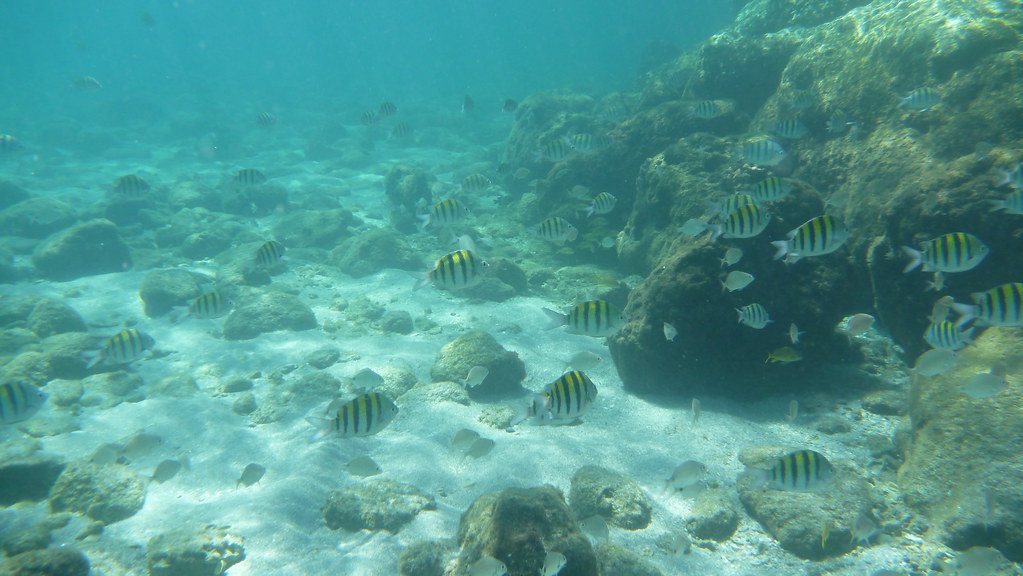Amy, your Picasa "feeling lucky" correction doesn't look too different than what you might get in Photo Elements. Obviously, it's much better than the original and much better than the manual editing. Usually for editing snorkeling photos I just auto-correct and then sharpen the photos a little. Sharpening usually helps close-ups a little (it's not an earth-shaking improvement like the auto correction sometimes is), but this may result in too much grain in longer range shots. My attempts at manual editing usually don't turn out that well, maybe because I really don't know the intricacies of Photo Elements. Occasionally lightening the photo or changing the color curves improves upon what the auto correction does. Also, I almost always crop my underwater photos, which often gives the appearance that I was closer to the fish than I really was. It is not easy to get close to fish, especially when snorkeling!
The bottom lline is that I don't do that much post-processing, mostly just cropping and auto correcting. Also, I don't have fancy camera gear, just your typical point-and-shoot. I think one of the keys for taking snorkeling photos is to get down with the fish. Shots looking down on fish from above or from the surface never look any good, and I always use a weight belt to help dive down in the water column. However, most of my shots are not deeper than about 15 feet, so I am not a macho freediver. I also spend a long time in the water when I snorkel, which increases my odds of coming upon a nice scene or something that is photogenic.
A couple of other things - I don't like the "underwater" modes on cameras because they often automatically set the camera to an ISO that is too high. This can result in photos that are grainy. If you are in sunny, clear, tropical water, I recommend setting the camera to an ISO of 100 for snorkeling photos. Typically, this means using a camera setting other than "auto". The other thing is to be as absolutely still as you can be when you take the photo. This can be hard when you are snorkeling because you often have to deal with waves and surge. I try to hold on to a rock (not coral!) with one hand to steady myself and then take the picture with the other hand. Finally, I've found that most of the advice for underwater photography is aimed at scuba divers and may not be applicable for snorkelers. For example, use of strobes is a major topic for scuba divers, but as a snorkeler you can get some great photos with natural sunlight.
Hope this helps,
Dave
 I was lucky to get a fish in the frame on the first day (have a hard time seeing the LCD).
I was lucky to get a fish in the frame on the first day (have a hard time seeing the LCD).

















